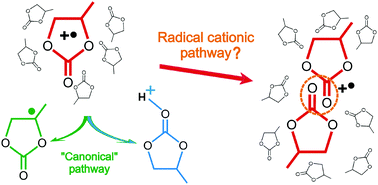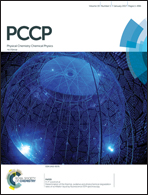Do primary carriers of both positive charge and unpaired electron spin exist in irradiated propylene carbonate?†
Abstract
In disagreement with the common concept of primary radiation-induced events in liquid carbonates, an analysis of the fluorescence response of irradiated luminophore solutions in propylene carbonate to magnetic fields reveals the presence of radical cations formed from the solvent. On the basis of their magnetic resonance characteristics, the radical cations are proposed to be ionised dimeric complexes with the spin density delocalised over two antiparallel carbonyl groups. The finding suggests that the basic models underlying the application of radiolysis to study the mechanisms of the oxidative decomposition of carbonates should be reexamined.


 Please wait while we load your content...
Please wait while we load your content...